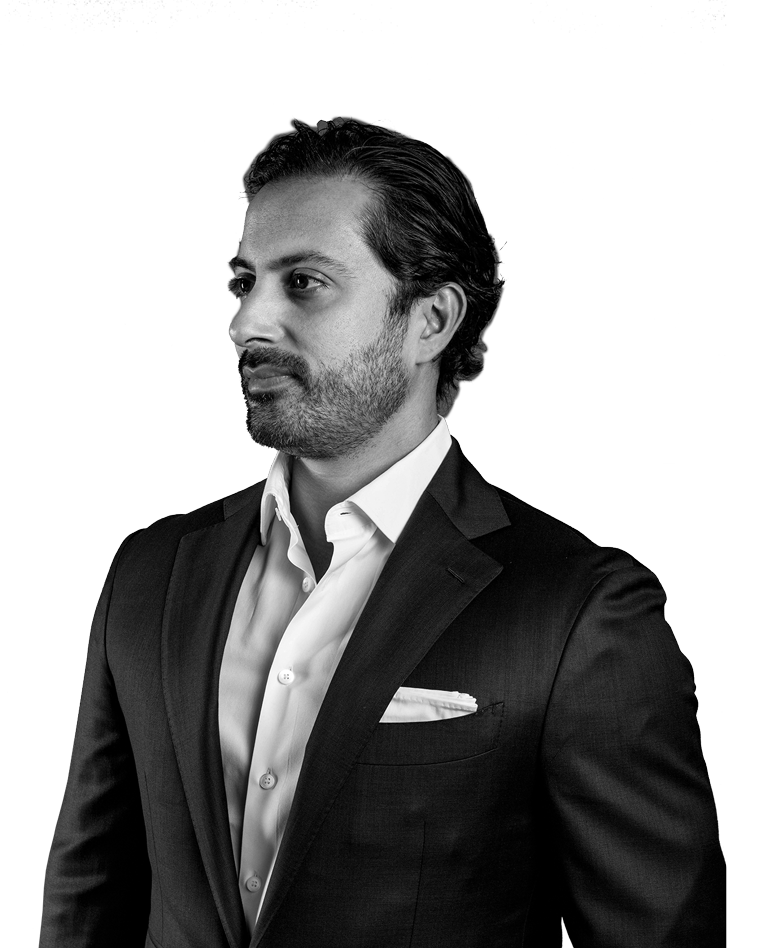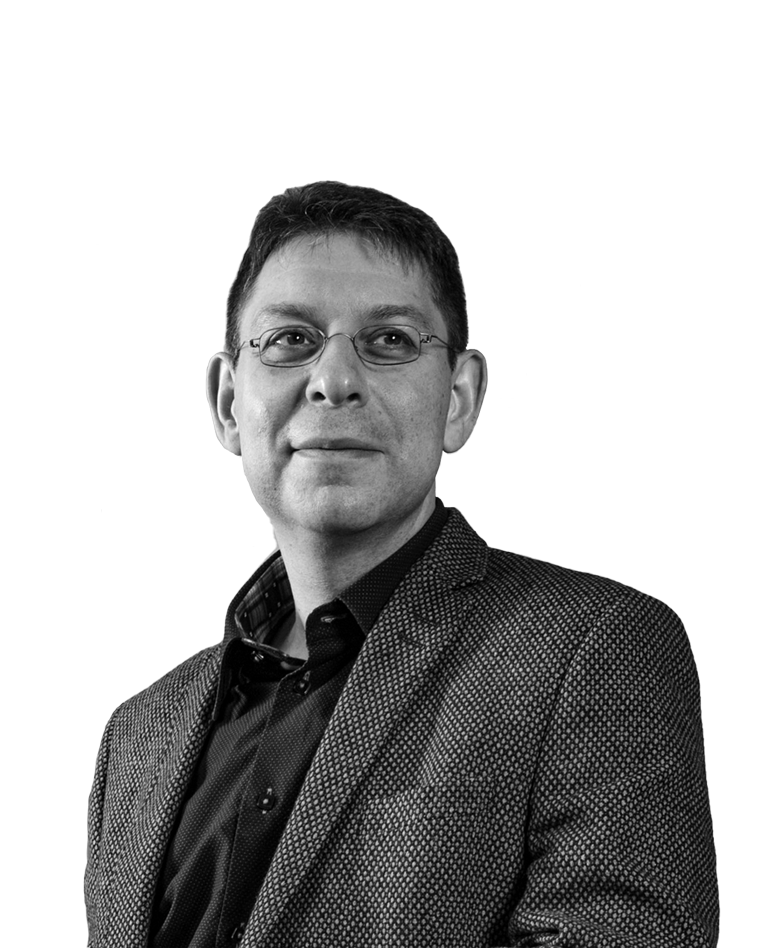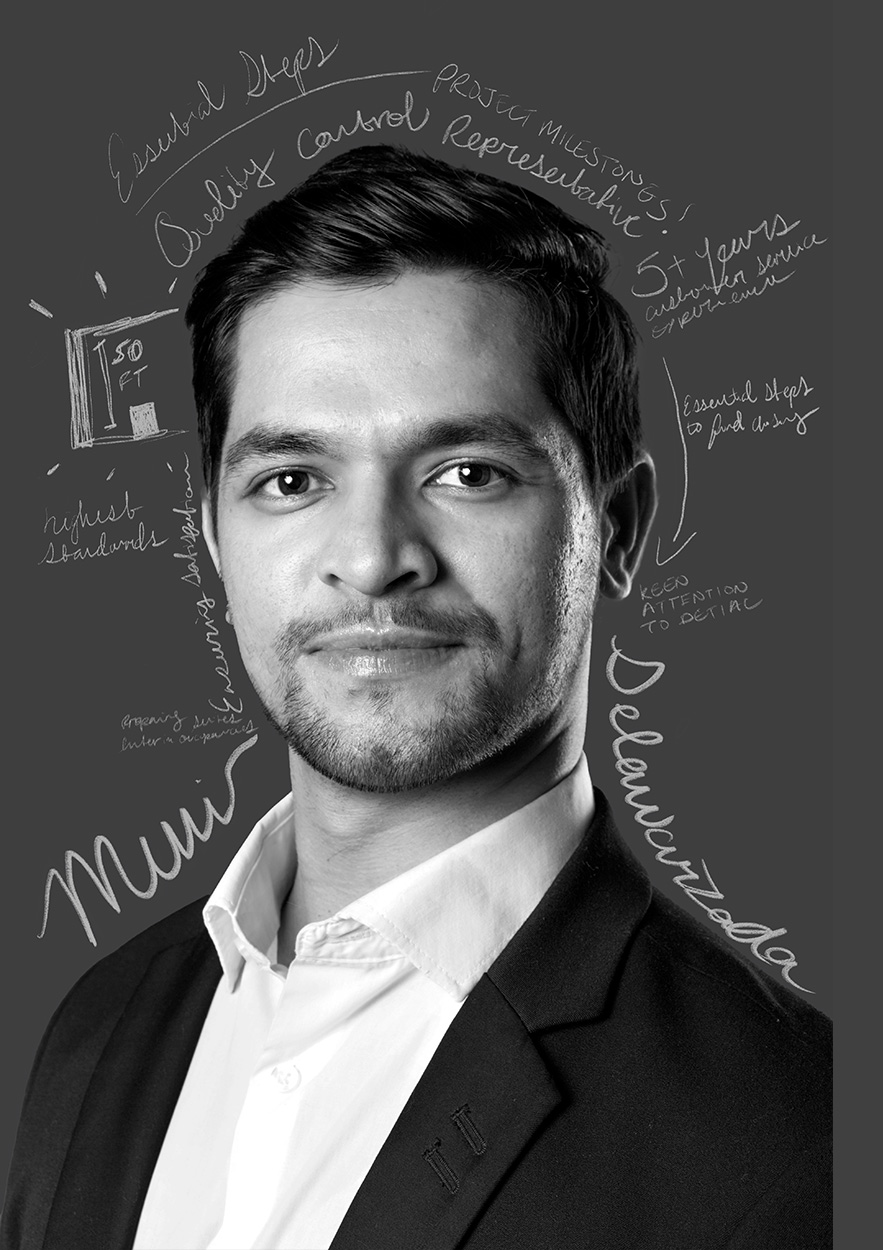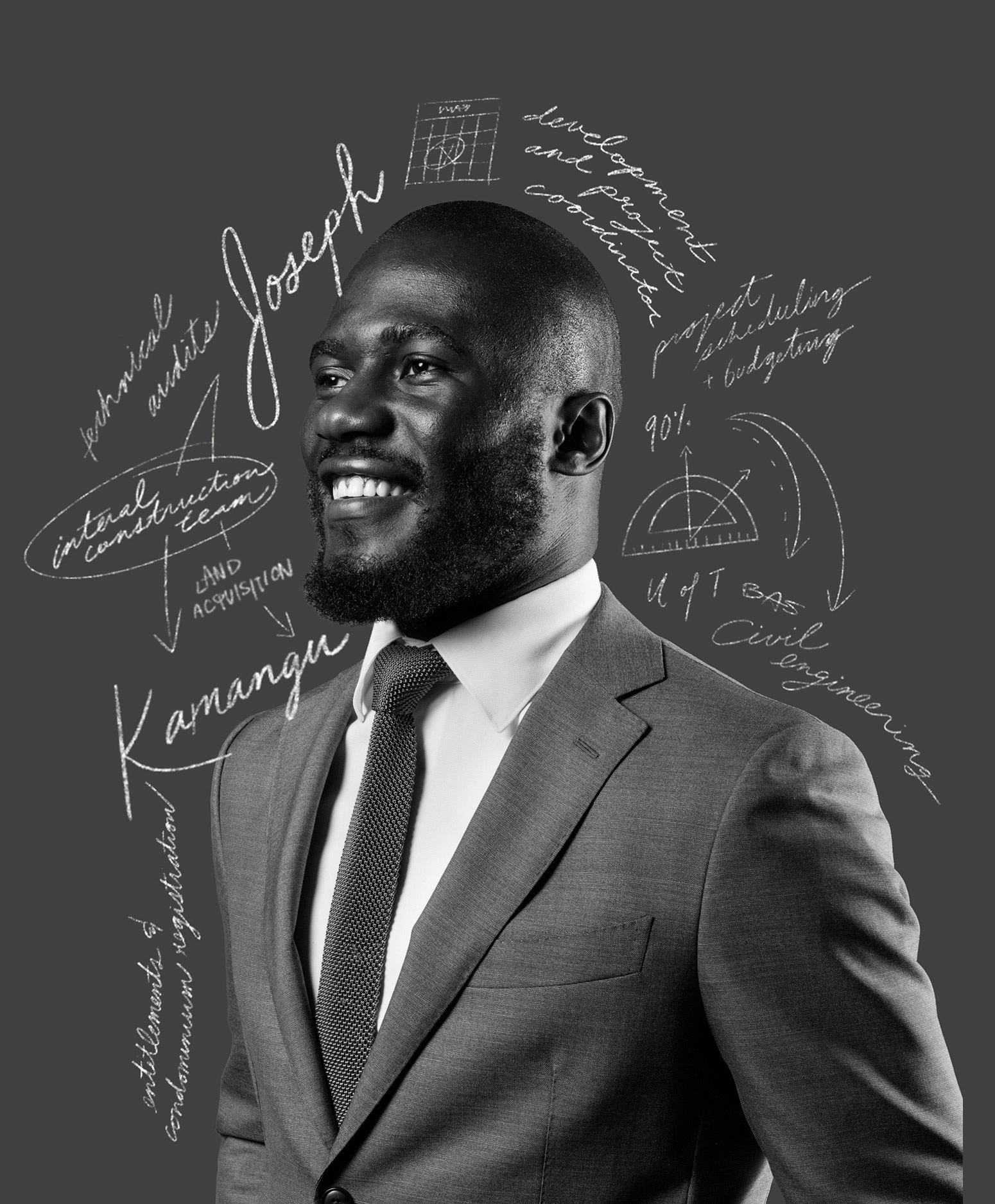DATE
June 14, 2021

Photography by: Justin Boruta
We recently sat down to interview Phil Freire, custom furniture and lighting designer; and owner of Metropolis Living, a design and fabrication studio. Freire has over a decade of experience creating bespoke pieces for numerous clients throughout Toronto, ranging from private furniture and art commission to restaurant design and build and his very own Metropolis Studio line. If you’ve gone out to dine in Toronto, you’ve likely eaten amongst some of Phil’s work.
His resourcefulness and consideration of historic elements made him a perfect match for Waterworks’ rugged aesthetic. With an eye for leveraging natural patinas and sourcing substantial pieces of reclaimed wood and machinery, Phil Freire was commissioned by Cecconi Simone, MOD Developments and Woodcliffe Landmark Properties to create many of the custom pieces first seen in our presentation centre for Waterworks.
As part of our mission at MOD, we create presentation centres that are directly reflective of what the finishing building will look and feel like so purchasers can get a sense of our vision for the project as soon as they walk in. We also use this as a way to implement sustainable design practices to limit our waste. At Waterworks, everything that was built by Metropolis Living for the presentation centre was subsequently repurposed for the condominium common areas. To learn more about Freire’s process and the inspiration at Waterworks, keep reading!
MOD: How did you begin creating custom furniture?
Phil Freire: l I ended up stumbling my way into the graphic arts industry while I was working as a machinist and studying mechanical drafting. After working in a corporate environment for a handful of years, I decided I was tired of that and decided to start a store in the Junction.
I eased my way into building furniture by first repurposing items into other things, deciding that I could start making stuff instead of just selling stuff. This happened to be something I really enjoyed while being lucrative at the same time. It actually ended up being easier to take custom orders so my clients could have exactly what they wanted while I still exercised the craftsmanship I loved. That’s when things started taking off.
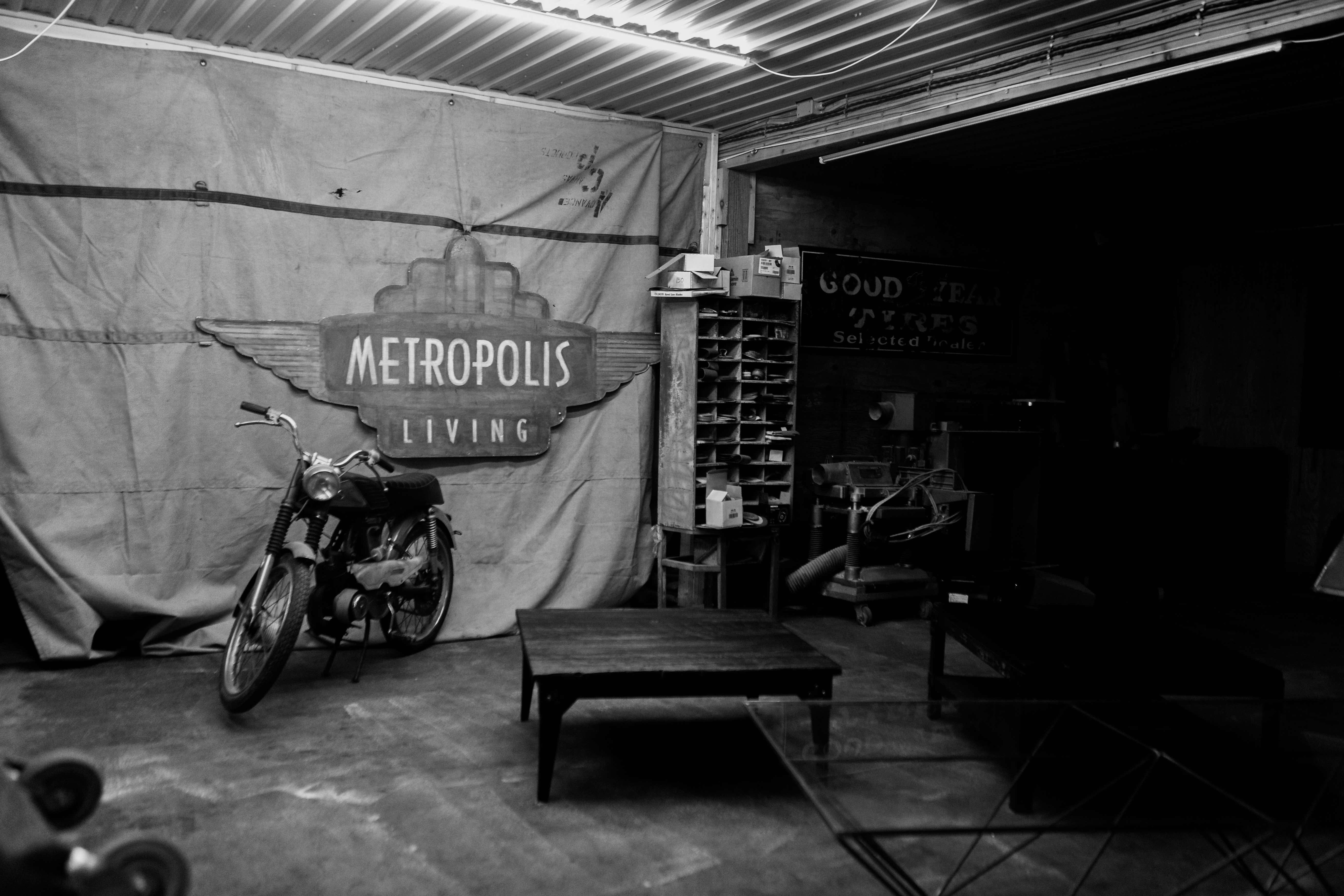
Do you remember the first piece you ever made?
Boy, that feels like ten years ago. I’m certain it would have been a repurposed piece — a console table made out of some turn-of-the-century textile mill equipment.
What have been the most challenging and most rewarding parts of being an entrepreneur?
The most rewarding has been knowing I’ve been able to keep it up every day. I’m independently owned, so I take on a huge scope of work between creating the furniture and running a business from the back-end and everything in between.
The hardest? Trying to find the work and then complete it while doing everything else. Although I work on my own clock, I find whenever I want to take a holiday, there’s a project coming up that prevents me from doing it!
Tell us a little bit about your design process. How do you take your ideas from paper to product?
I kind of see an unconventional beauty in random objects. I’ll see something out in a field and just think, “that would make a great coffee table,” or “that would be a great headboard.” I really like the process of getting to work with my hands and just starting to make something. Working with repurposed materials allows me to be inspired by existing character and patina, while the ideas kind of take shape on their own.
But more often than not, I’ll be approached by a designer with their own ideas so I work closely with them to develop the look for the pieces they need.

How involved are your clients usually with the process?
Some clients just love what I do and let me go ahead with minimal intervention. Normally, there’s a lot more back and forth. I’ll typically receive designs, a drawing, or inspirational images as a guide and I’ll roll with that. I’ll come back with some sketches of what I have in mind for them and we’ll spend some time collaborating. I can often extrapolate what people are trying to ask for because of my experience working in multiple design industries from graphic arts to welding and fabricating to woodworking.
On average, how long does it take to make most pieces?
Sometimes you’re lucky enough to find just the materials you want, other times you’re waiting for the right materials to show up. But usually, we can complete our projects in a couple of weeks.
Where do you find your inspiration from?
There’s a strong attention to detail and craftsmanship from objects in history. Even just looking at industrial equipment that was meant to make other stuff is inspiring. It’s full of ornate details.

Do you have a favourite piece that you’ve ever made?
The photo above is one of my latest pieces…and my latest is always my favorite. I created this piece for the common area of an Artscape condo building downtown.The pleasure of working with a client who gives me carte blanche to create something unique is something that I really enjoy and the combination of materials showcases Metropolis’ abilities very well.

Waterworks Sales Centre. Credit: Shai Gill.
Can you talk a little bit about the inspiration for the pieces at Waterworks?
We wanted the furnishings to fit in the era of the building, so naturally, we stuck with an industrial turn-of-the-century vibe for Waterworks. Think substantial ribbing and textures. Surfaces you want to touch.
For the tops of the tables, we wanted something really unique. We used the Japanese process of Shou Sugi Ban, where you char the wood and stain it black to seal it in so it’s the blackest black surface you can get. Everything for Waterworks had to have a real sense of authenticity. Things that not only felt old, but old and original. The whole process had to be very considered.
What’s your favourite piece in the whole collection that now lives at Waterworks and why?
The coffee tables are my favourite. They’re massive and built from old timbers reclaimed from an old factory building. The natural character of the wood really speaks for itself without much intervention, other than a clear coat and some sanding. We were also on a tight timeline, and it’s amazing to see what we could come up with in that time.
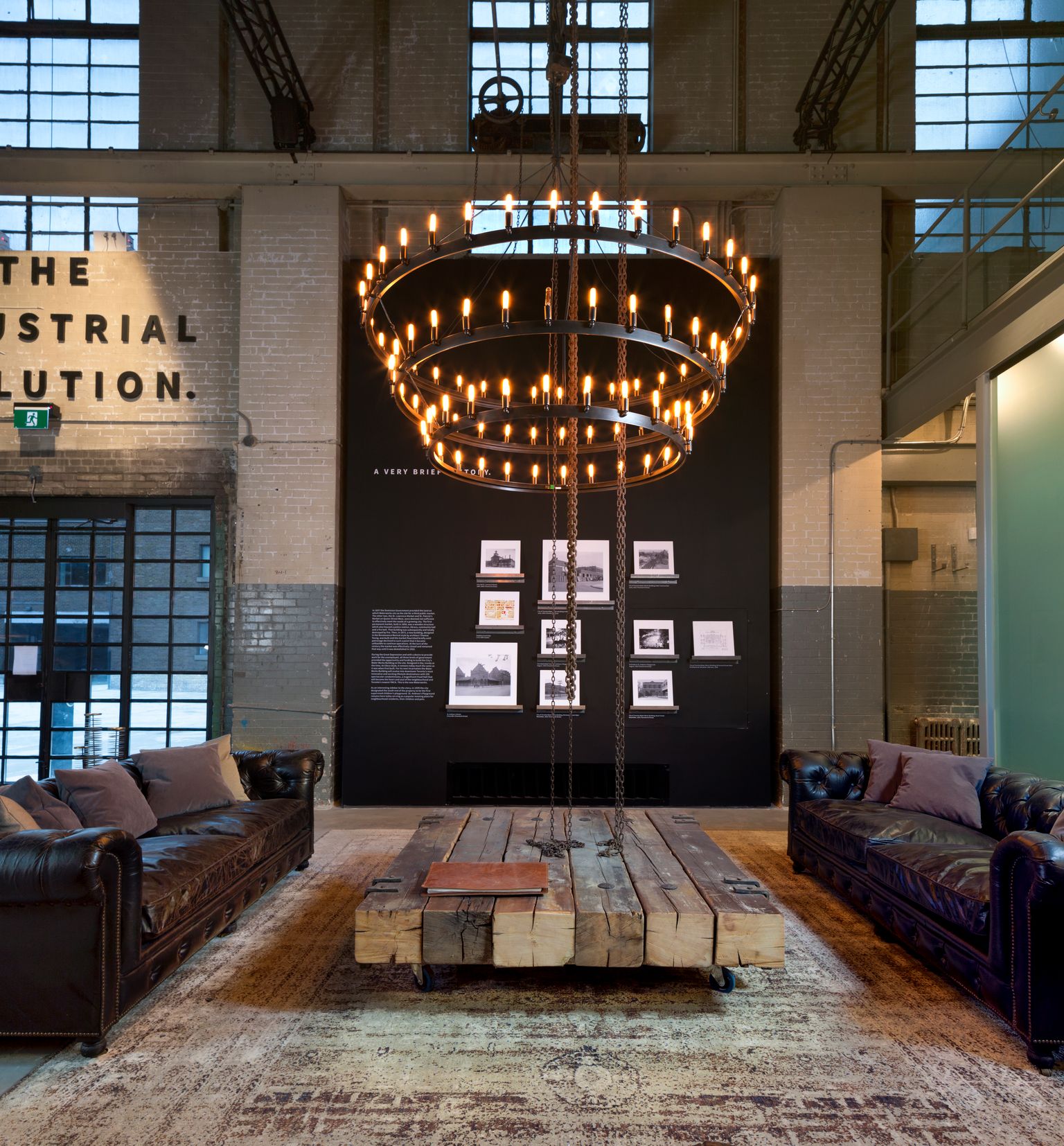
Waterworks Sales Centre. Credit: Shai Gill.
So many people absolutely love the interiors at Waterworks. What do you think draws people to this aesthetic most?
I think people really like the history, and in turn, the character that’s extended with it. MOD does a really good job at entering an environment that exists without disrupting it. You see it so much in Toronto, beautiful old buildings being torn down and replaced — and once those buildings are gone, they’re gone. Not enough companies are preserving Toronto’s heritage the way MOD is. The history is so beautiful and has contributed so much to the city’s charm, and I think that’s what draws people to Waterworks. Authenticity doesn’t go unnoticed.
Did you enjoy working on this project?
Working with MOD and Woodcliffe Landmark Properties was fabulous. It was one of my favourites for sure. My personal aesthetic is, in essence, the same as Waterworks’, so it was the perfect partnership. I also contributed to much of the decorating as well. All the vintage items in there, and the lighting, were supplied by Metropolis. If there’s any project that is a reflection of me, it’s this one, 100%.
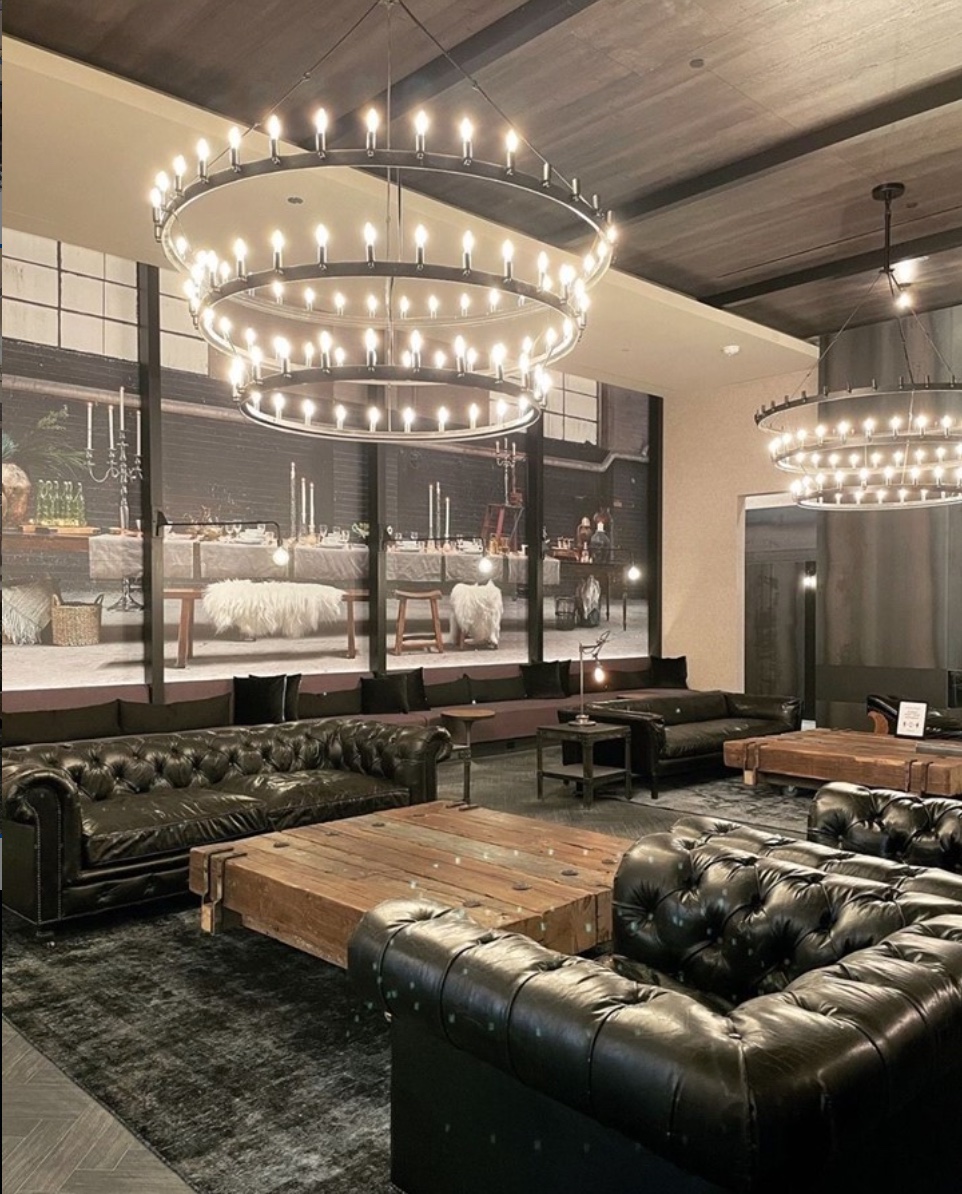
Waterworks Lobby. Credit: MOD Developments





